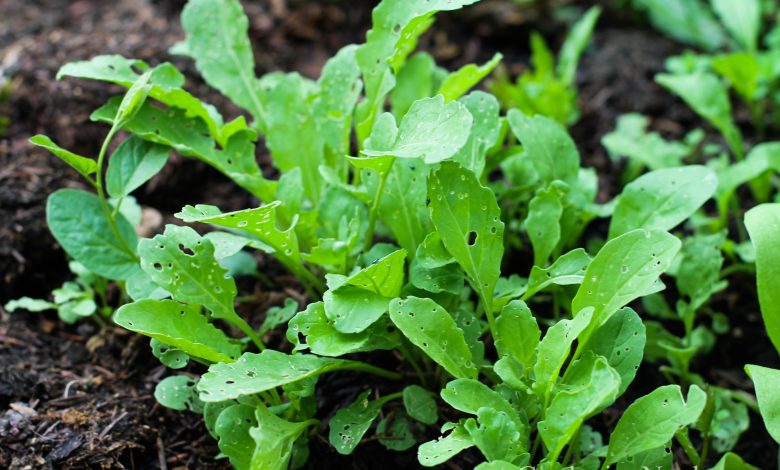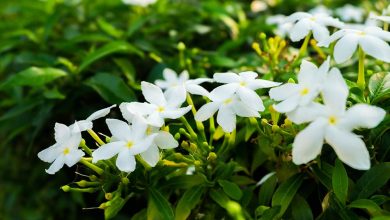Grow Arugula step by step: planting, irrigation, harvest and others

Hello to all agrohuerters! In today’s article we will learn how to grow arugula in our organic gardens. We will see how to prepare the land, when to sow, what care it needs and, finally, when we should harvest. Can arugula be associated with any other crop? Throughout the article we will discover it.

CHARACTERISTICS OF THE ROCKET
Arugula, also known as dandelion, caterpillar, or arugula, is an annual herb native to Mediterranean Europe and western Asia. Its scientific name Eruca vesicaria cavanilles belongs to the cruciferous family and is also cultivated in North America as well as in North Africa.
It is an easily cultivated annual plant that resists different environments well. It has nutritional properties of great interest facilitating the purification of the body and combating constipation. Among other benefits we also find the high presence of antioxidants, vitamin C, A, K and other compounds such as zeaxanthin and lutein.
This fact, together with its culinary properties, has boosted arugula as one of the leafy vegetables that generates the most attention.
STEPS TO FOLLOW TO GROW RUGULA IN THE GARDEN
1. GROUND PREPARATION
It is a very flexible species in terms of soil types. It is recommended, however, to add decomposed organic matter to the soil to enrich it. This soil must be moist and well drained. It grows well on calcareous soils.
2. SEEDING
Arugula can be grown for much of the year as it is resistant to high and low temperatures.
The seeds should be spread apart from the sowing points about 20 cm in the rows. To do this, we will sow several seeds and as they germinate after 10-14 days, the weakest shoots will be lost. Planting depth will be around half a centimeter. One of the advantages of this crop is that we will not have to transplant it as it can be sown directly on the final land.
3. CARE THAT WE SHOULD TAKE INTO ACCOUNT
Due to the rapid growth of this plant, there is a risk that it will invade the rest of the garden, so it will be important to control its growth by also regularly cleaning weeds and aerating the land.
The ideal, as we have already mentioned, is to grow in warm climates, but its resistance allows it to withstand temperatures of up to -10ºC.
An interesting factor when growing arugula is to control the time of flowering, since when it takes place, the leaves of our plants will take on a more bitter taste.
In relation to light levels, arugula develops better in semi-shaded areas than directly exposed to the sun, which also allows the volume of water used in irrigation to be reduced.
4. IRRIGATION AND TREATMENTS
Like other classic crops in our garden, arugula needs constant humidity, so the use of drip irrigation systems is recommended, which will provide our plants with an adequate and regular level of humidity.
5. HARVEST
The speed in the growth of the arugula allows harvesting the first leaves a month and a half after sowing. Normally this moment coincides with the equator of summer when sowing has been carried out in spring.
To collect the leaves, the cut must be made just at the base of the plant before the moment of flowering to maintain the organoleptic properties. The younger the leaves, the less bitter we will find.
PESTS AND DISEASES OF ROCKET
Arugula is sometimes attacked by fungi that cause diseases such as powdery mildew or rust that attack the stems and leaves, respectively. Likewise, like many other species, it is attacked by aphids or snails when there is excess humidity.
CAN RUGULA BE ASSOCIATED WITH OTHER CROPS?
Arugula is a plant that is usually planted with other vegetables such as tomatoes, carrots, onions, lettuce or peppers, while its association with cabbage or turnips and other vegetables of the cruciferous family is avoided.
As in other species, if we let a plant develop we can obtain flower clusters that will provide us with seeds to re-sow whenever we want.
I leave you a link where you can learn to cook with arugula.
This is all for today, I hope you liked the article and that you start growing arugula in your gardens. You can tell us about your experiences in the comments. See you in the next article!
Have a nice day!

![Photo of How to Plant Wisteria or Glycinia in your Garden: [Complete Guide]](https://www.complete-gardening.com/wp-content/uploads/2022/08/how-to-plant-wisteria-or-glycinia-in-your-garden-complete-guide-390x220.jpg)


